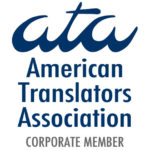WASHINGTON (Dow Jones)–The White House is preparing to launch a Spanish-language version of its Web site, Whitehouse.gov, by the end of the year, according to the company doing its recruiting.
Earlier this week, Rock Creek Strategic Marketing sent out four job postings that, when filled, will expand the first White House Office of New Media by almost 50%. In addition to a video editor, Web writer and designer, the White House is looking for a Spanish-language writer and producer, according to the ads.
“They’re hoping that by the end of the year – if not sooner – they can have a Spanish-language version of Whitehouse.gov launched,” said Scott Johnson, co-owner of Rock Creek Strategic Marketing, a Washington-area communications firm.
The White House authorized his company to begin gathering candidates to help expand the new-media office from its current size of roughly 10 employees, he said.
“These people for the most part have been on the campaign trail with Obama for up to two years,” Johnson said. “They eat poorly and sleep intermittently. These guys are not just in there punching the clock – they are passionate about what they’re doing.”
Would-be hires should be prepared, the ad warns: “Long work hours and short deadlines will be the norm.”
The White House hasn’t made an official announcement about a Spanish-language edition of the White House Web site. Currently, the site has only biographies of the president, vice-president and their wives translated into Spanish.
“The president and the administration use new Web-based tools to keep the public updated on important issues, promote transparency, and provide opportunities for meaningful engagement,” an administration official said. “We are constantly looking at ways we can strengthen and expand the White House’s online program.”
In late February, Obama appointed Macon Phillips as his director of new media. Previously Phillips supervised online communications during the transition and developed Change.gov, according to a White House statement.
Appointed at the same time, Deputy New Media Director Cammie Croft also worked in both the transition and campaign, where she managed the Web sites FighttheSmears.com and UndertheRadar.com. And the White House recently borrowed Bev Godwin, now director of online resources, from the U.S. General Services Administration, where she runs the Web site USA.gov.
“Did you know your government may be cooler and more approachable than you think?” Godwin wrote May 21 on the White House’s blog, The Briefing Room. “It really is. I know. I work here.”
-By Kristina Peterson, Dow Jones Newswires
Source: http://online.wsj.com/article/BT-CO-20090611-715461.html



